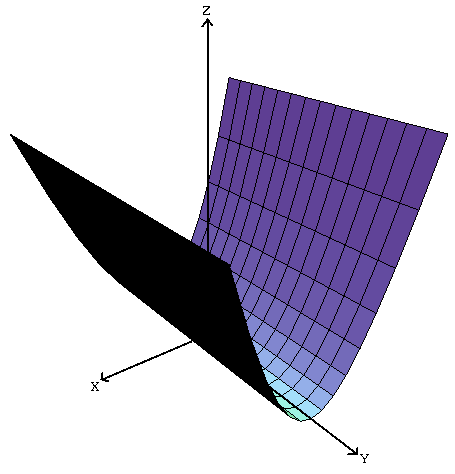
Any function of two variables in which there is no dependence on one of the
two variables (ie. one of the variables is missing) is called a
cylinder. Cylinders are given more specific names based on the shape of
their cross-sections. For example, the function z = x2 has no y
dependence and is parabolic. It should have the same parabolic cross
section for any value of y. Thus it is called a parabolic cylinder.

The graph of x2 + y2 = 1 is the same for any value of z and is shaped like a circle. It is called a right circular cylinder. (Note that the cylinder in the figure should, technically speaking, extend to plus and minu infinity in the z direction.)
